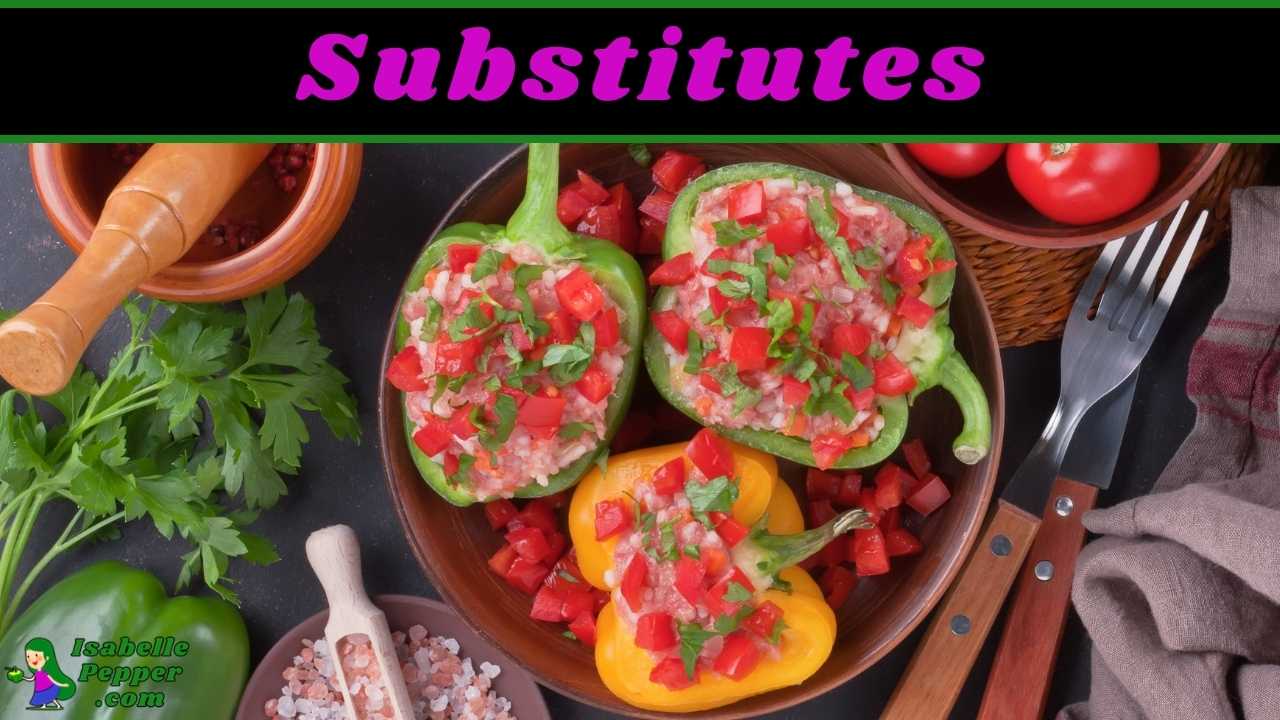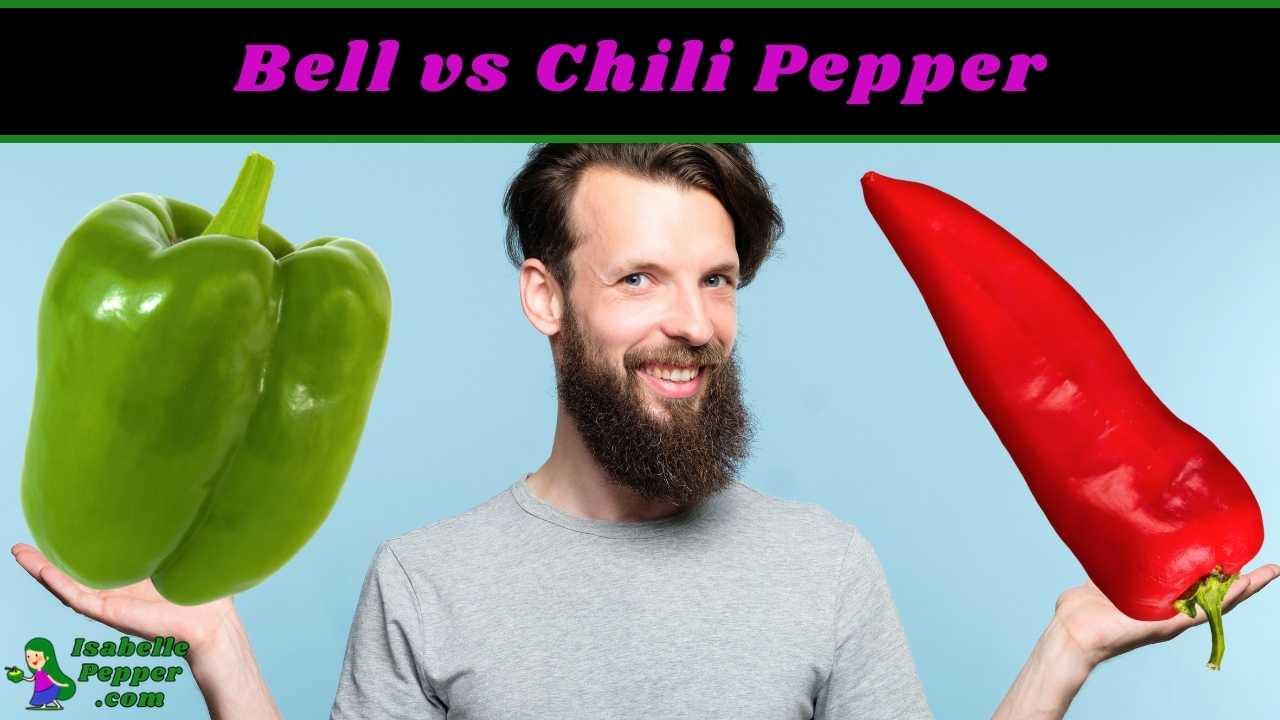Growing bell peppers can be a rewarding experience for gardeners, but there’s nothing more disappointing than anticipating a bountiful harvest, only to find that your homegrown bell peppers are smaller than expected.
While these petite peppers are still edible, understanding the factors that contribute to their diminutive size can empower you to make informed changes to your gardening practices.
In this article, we’ll delve into the intricate world of bell pepper growth, exploring the various influences that can lead to undersized bell peppers and providing actionable solutions to help you yield larger, more satisfying results.

Are My Homegrown Bell Peppers Too Small?
The average bell pepper is around 5 inches, if your bell pepper is smaller than that, then it’s important to find a solution.
However, bell peppers can be smaller or larger depending on their variety and growth conditions.
I created an article explaining this in more detail, I highly recommend reading that article to determine if your bell peppers are the right size.
You can read it here: How Big do Bell Peppers Get?
10 Common Causes of Small Bell Peppers
1. Premature Flowering
One common pitfall that can lead to small bell peppers is premature flowering.
When a pepper plant starts to flower too early in its life cycle, it diverts valuable resources away from vegetative growth, resulting in stunted overall development.
This premature flowering is often triggered by stress, such as transplanting into a too-small pot.
A strategic approach to addressing this issue involves pinching off flowers during the initial growth stages, allowing the plant to establish a robust root system before diverting energy to fruit production.
2. Lateral Branch Fruit Development
Another factor that can contribute to smaller peppers is fruit development on lateral branches rather than the main stem.
While lateral branches create a bushier plant, fruits produced on these branches tend to be smaller due to reduced nutrient flow from the central stem.
Pruning techniques, such as removing flower buds from lateral branches, can redirect nutrients towards fruit growth on the main stem, yielding larger and more substantial peppers.
3. Crowding Plants Too Closely
Giving your bell pepper plants adequate space to thrive is crucial for ensuring optimal growth and fruit size.
Overcrowding plants can lead to intense competition for resources, including nutrients, water, and sunlight.
This competition can result in smaller peppers with less developed flavors.
Providing each plant with sufficient spacing, typically around 12 inches apart, allows them to establish robust root systems and access essential resources, promoting the production of larger and more flavorful fruits.
4. Soil Nutrient Imbalance
A balanced diet is essential for any plant’s growth, and bell peppers are no exception. Throughout their growth stages, bell pepper plants require specific nutrients in varying proportions.
Insufficient or imbalanced nutrients, particularly nitrogen, phosphorus, and potassium, can hinder proper fruit development and lead to smaller peppers.
Tailoring your fertilization regimen to meet the changing nutrient needs of bell pepper plants as they progress from seedlings to mature plants is vital for achieving optimal size and flavor.
5. Inconsistent Watering
Water is a lifeline for bell pepper plants, and maintaining a consistent watering routine is paramount for healthy growth.
Both overwatering and underwatering can negatively impact pepper size.
Inadequate water availability can cause fruits to develop a bitter taste, while excessive water can lead to root rot and nutrient leaching.
Striking the right balance and providing approximately 2 inches of water per week, either through manual watering or efficient irrigation methods, supports robust growth and maximizes pepper size.
6. High Heat and Humidity
While bell peppers thrive in warm weather, excessively high temperatures and humidity levels can stress the plants and hinder fruit development.
Heat stress may lead to smaller, misshapen peppers with compromised flavors.
Implementing shading techniques, mulching, and regular deep watering can help mitigate the effects of extreme heat and humidity, creating a more conducive environment for larger and healthier peppers.
7. Insufficient Sunlight
Sunlight serves as the energy source for photosynthesis, the process that fuels plant growth.
Inadequate sunlight exposure can lead to diminished photosynthetic activity, resulting in smaller peppers.
Ensuring that your bell pepper plants receive at least 6 to 8 hours of sunlight daily and strategically placing them in sun-drenched locations can optimize photosynthesis and promote the development of well-sized and flavorful peppers.
8. Pest and Disease Issues
Pests and diseases are unwelcome guests that can disrupt the growth of bell pepper plants and lead to undersized fruits.
Aphids, mites, and diseases like blossom end rot are common culprits that can hamper pepper development.
Vigilance, early detection, and implementing integrated pest management strategies are essential for preventing and addressing pest and disease issues, allowing your bell pepper plants to thrive and produce larger, more robust peppers.
9. You Haven’t Waited Long Enough
Patience is a virtue when it comes to growing bell peppers. The maturation process of bell peppers takes time, and premature harvesting can result in smaller fruits.
Waiting for the peppers to reach their full color and size potential before harvesting ensures that you’ll enjoy peppers at their peak flavor and size.
10. Miniature Varieties
You might be growing a miniature variety of bell pepper and not even realize it.
Miniature bell pepper varieties like the “Mini Bell Blend,” typically only measure around 1 to 2 inches in length.
If all else fails, check the label of your seed packet to make sure the variety you are growing is not supposed to be small.
Strategies for Growing Larger Bell Peppers
Proper Timing for Planting
Starting your bell pepper plants at the right time is crucial for achieving optimal size.
Begin by planting seeds indoors approximately 8 to 10 weeks before the last frost date in your area.
This early start provides the plants with ample time to develop strong root systems and establish themselves before transitioning to outdoor growing conditions.
Temperature and Sunlight Management
Maintaining a suitable temperature range is essential for maximizing bell pepper size.
While bell peppers thrive in warm conditions, excessively hot temperatures can hinder growth. S
tarting plants indoors allows you to control temperature variables and ensure a smooth transition to outdoor conditions.
Additionally, strategically placing your pepper plants to receive adequate sunlight while providing protection from scorching afternoon rays can create an ideal environment for larger pepper production.
Nutrient Management
Meeting the nutritional needs of bell pepper plants at each growth stage is critical for achieving robust fruit development.
Implement a fertilization regimen that addresses the changing nutrient requirements of the plants.
During the early stages, focus on nitrogen-rich fertilizers to promote healthy foliage.
As the plants transition to flowering and fruiting, adjust the fertilizer composition to prioritize phosphorus and potassium, essential for flower and fruit formation.
Watering Practices
Consistent and appropriate watering practices are essential for preventing water stress and promoting optimal pepper growth.
Incorporate efficient watering methods, such as soaker hoses or drip irrigation systems, to ensure consistent moisture levels without overwatering.
Monitoring soil moisture and adjusting watering frequency based on weather conditions and plant needs will help prevent water-related issues that can lead to small, bitter peppers.
You can find more tips on growing bell peppers by checking out this article by The Spruce
Conclusion
Growing homegrown bell peppers is a delightful endeavor that requires a blend of knowledge, care, and patience.
Understanding the intricate interplay of environmental factors, nutrient balance, and plant care practices can empower you to address potential causes of small peppers and unlock the secrets to growing larger, more flavorful bell peppers.
By implementing strategic solutions, such as proper timing, temperature management, nutrient optimization, and watering practices, you can enhance your gardening experience and savor the satisfaction of harvesting vibrant, succulent bell peppers that truly showcase the fruits of your labor.
Remember, whether big or small, each homegrown pepper embodies the love and dedication you invest in your garden.





